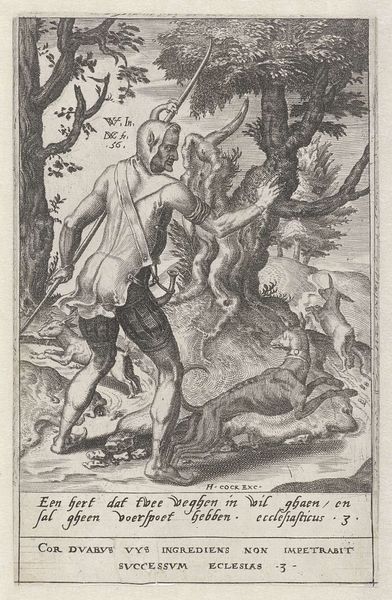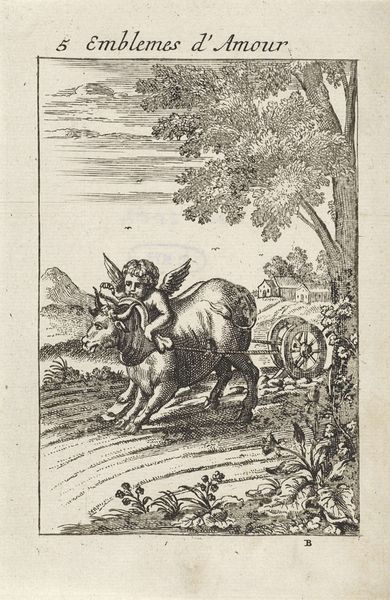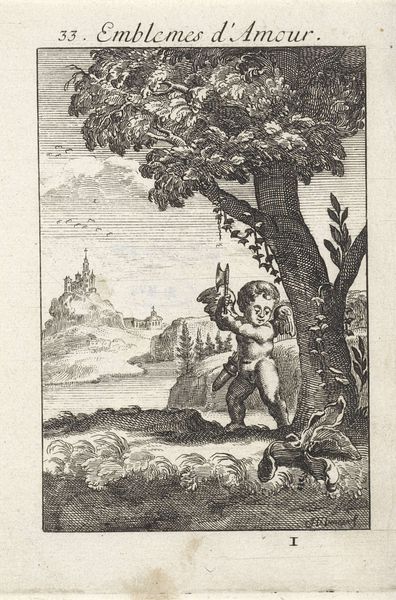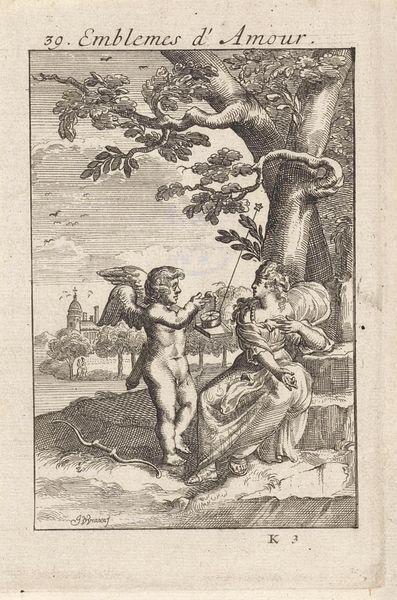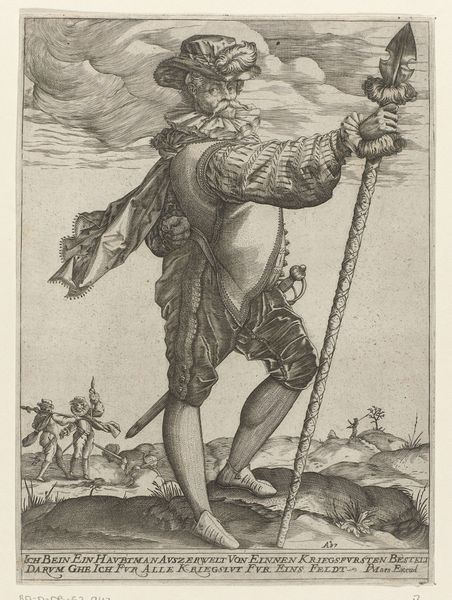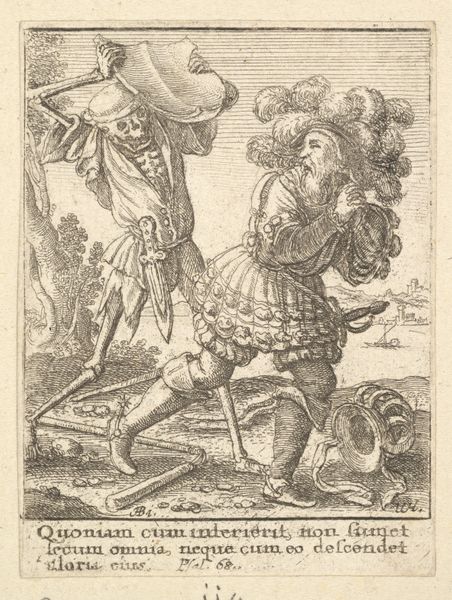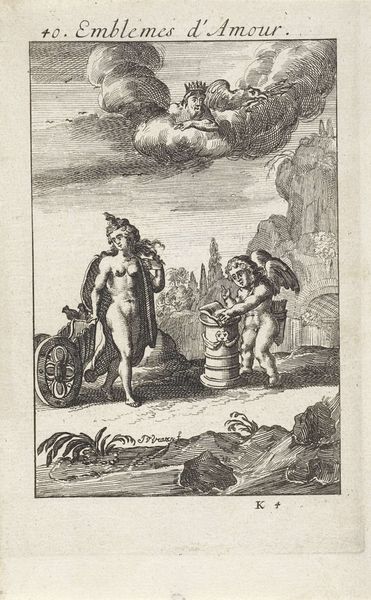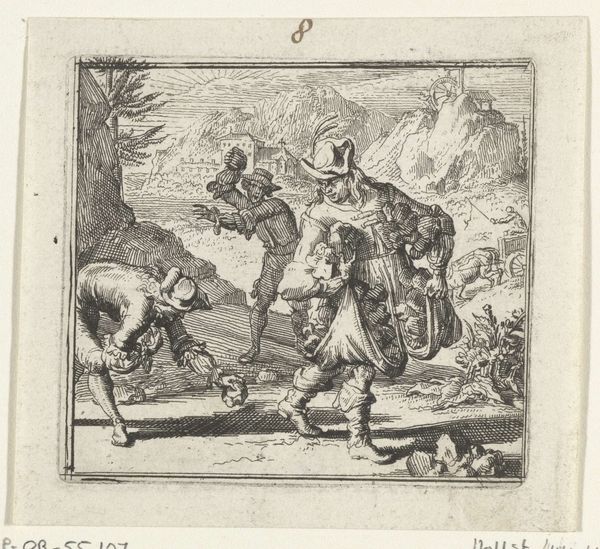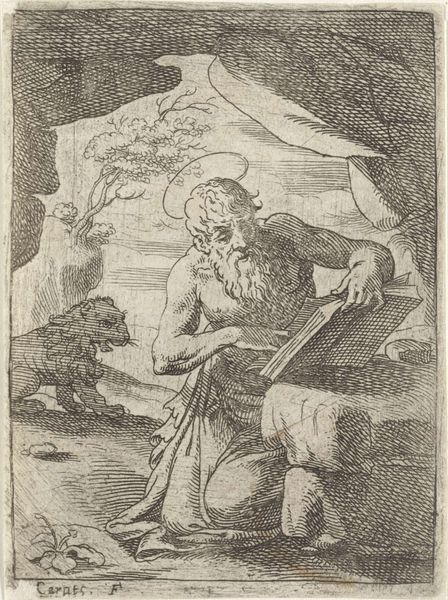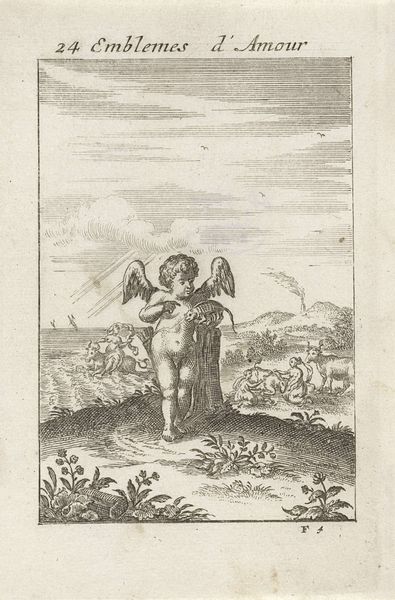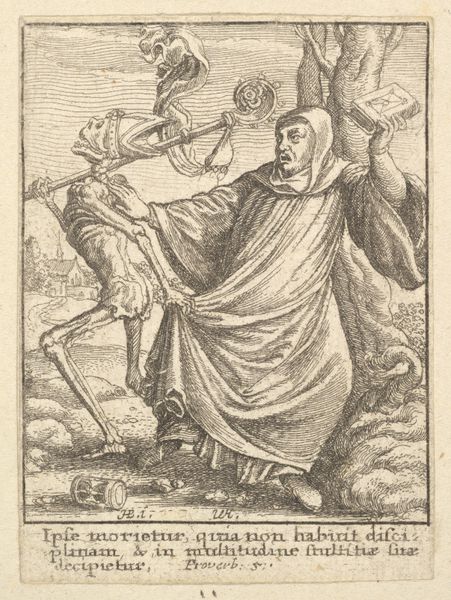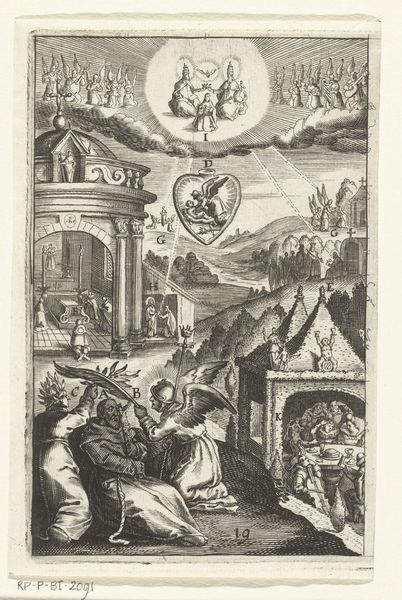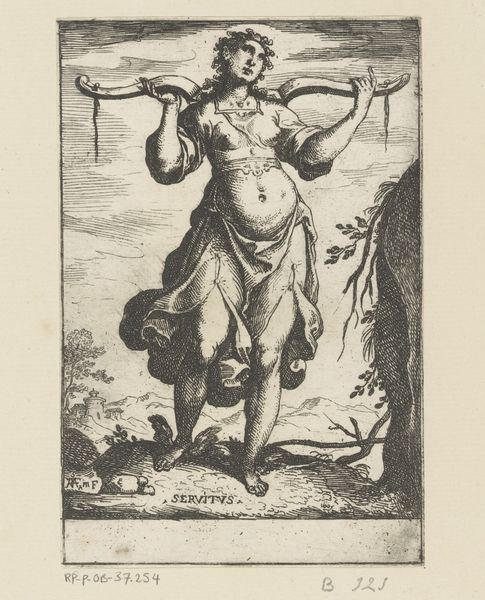
print, engraving
#
allegory
#
narrative-art
#
baroque
# print
#
figuration
#
line
#
genre-painting
#
engraving
Dimensions: height 145 mm, width 95 mm
Copyright: Rijks Museum: Open Domain
Editor: This engraving by Jan van Vianen, titled "Amor vertrapt wapenschild en geldzak," created in 1686, shows a chubby Cupid trampling a shield and moneybag. The stark lines are really striking! How should we interpret this imagery? Curator: Let's focus on what the piece is made of: engraving. Think about the material realities here. This wasn’t some quick sketch, but rather a laborious process of carving lines into a metal plate to produce many impressions. What was the economic incentive to produce so many? Editor: Presumably, to disseminate its message to a wider audience. So what is the message related to its materials? Curator: Exactly! Consider what is being rejected in the image. The "wapenschild," the weaponry, signifies war and power. The moneybag obviously symbolizes wealth. Cupid’s destruction of those objects speaks to the material values that society prized. The very production of the print itself--replicable, relatively affordable, and accessible--suggests a shift towards valuing broader cultural engagement over singular displays of wealth and force. Editor: So the print as a medium itself reinforces that critique of power and wealth? Curator: Precisely! It democratizes the very idea of "art." Moreover, note the Baroque style, common at the time. The ornate lines and allegorical themes reflect an interest in persuasive visual rhetoric. It’s about capturing an audience. Editor: That's interesting, viewing the choice of making a print itself as a commentary. It encourages us to look beyond the pure symbolism within the picture. Curator: Right. By looking at its production and mode of circulation, we get insight into the values and class dynamics of 17th century Dutch society. We see a changing economy that facilitated different kinds of art for different classes. Editor: It really brings a new perspective by analyzing the work through that production lens! Curator: Indeed, seeing art in light of materials reveals much more than artistic intention alone ever could.
Comments
No comments
Be the first to comment and join the conversation on the ultimate creative platform.
